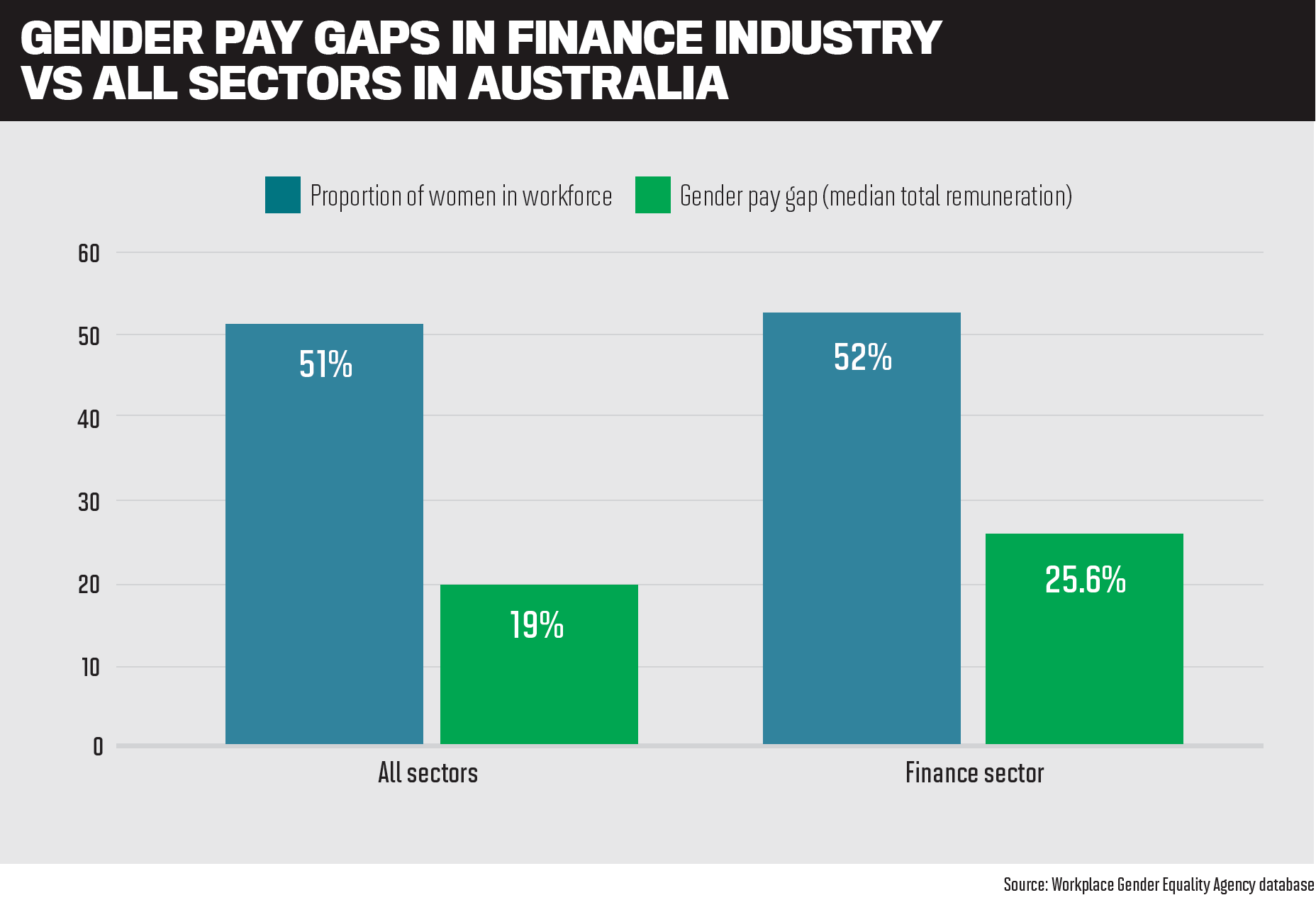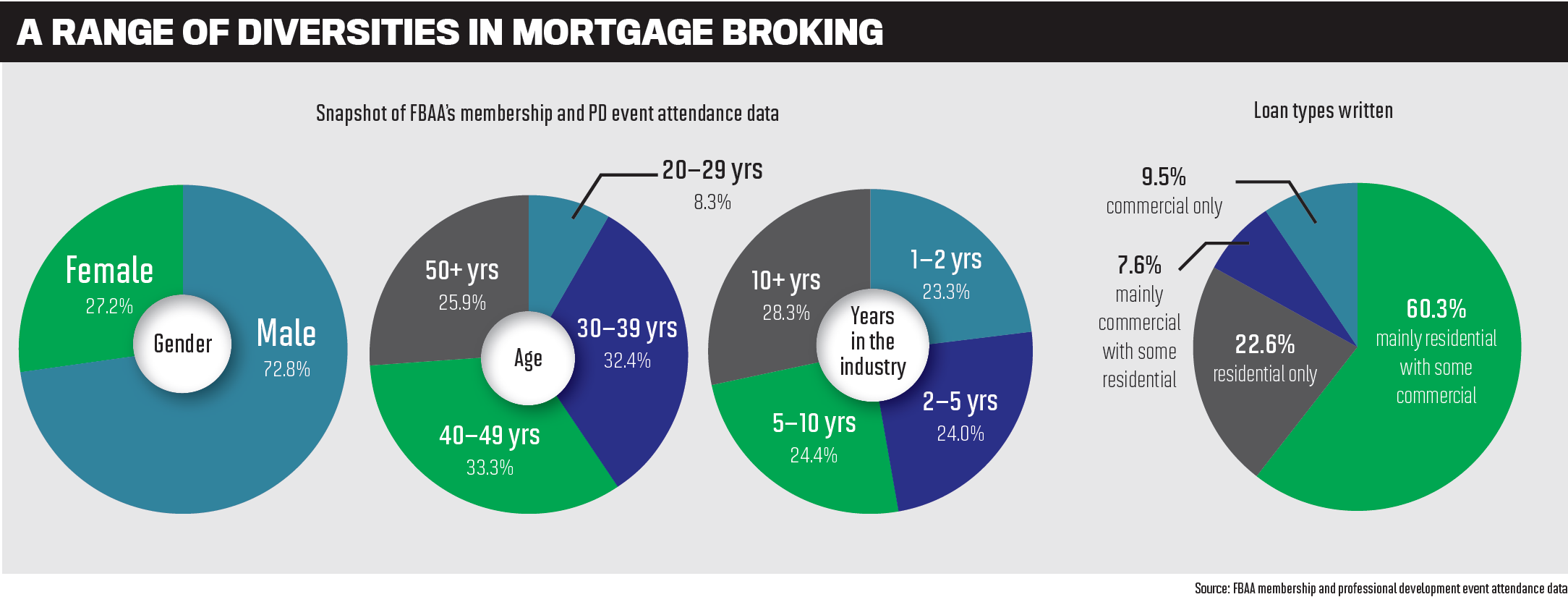How inclusive strategies can break down barriers

Often characterised by tradition and conservatism, the mortgage industry is undergoing a profound transformation.
As societal norms evolve and consumer demographics change, the push for diversity and inclusion has become more than just a buzzword – it’s a business imperative. But what does true diversity look like in finance, and how can the industry overcome its long-standing barriers to create a more inclusive environment?
Multifaceted nature of diversity
“One of the pitfalls often met when considering diversity is the placing of definitions that inadvertently restrict the very essence of what diversification sets out to achieve – inclusion,” says Joanna James (pictured above left), chief development officer at the FBAA.
James highlights a crucial point: diversity is not a one-dimensional concept. It encompasses a wide range of factors, including gender, race, religion, age and experience. This multifaceted nature presents both challenges and opportunities for the mortgage industry.
“When considering diversity, equity and inclusion, the first thing is [to ask] what or whom we are speaking about, whether it be gender, race, religion, age, or experience itself,” James explains. “Ultimately, like a kaleidoscope, this is a 360-degree continuous conversation.”
This nuanced approach is essential in an industry that serves a broad spectrum of clients. Mortgage brokers, for instance, work with customers from all walks of life, inherently requiring a diverse skill set and understanding. It’s about reimagining the industry to reflect the diverse clientele it serves and to harness the full potential of its workforce.

Changing face of mortgage broking
The mortgage broking sector represents a microcosm of the broader changes occurring across society. “We are already seeing a shift with experienced brokers retiring, new-to-industry brokers entering as young professionals with degrees, and an increase in gender balance,” James says.
“Whilst there are positive trends, there is still continued headway to be made.”
This generational shift is bringing fresh perspectives and skills to the industry. However, it also highlights the need for continued efforts to ensure diversity across all aspects of the business.
One area ripe for diversification is the commercial and asset finance space.
“Unlike residential mortgages where the majority are written by brokers, the commercial and asset space has less than 29% facilitated by brokers,” James says.
This presents a significant opportunity for brokers to diversify their business models and for the industry to attract a wider range of professionals. The FBAA is actively supporting this expansion, having appointed Steven Ragany as national commercial and asset manager.
Despite progress, there are still significant barriers to achieving diversity in the financial services sector.
“All impediments to inclusivity start with some form of ignorance or lack of understanding,” James says. “The only way to address this is by having the necessary conversations to shift understanding.”
The conversations themselves need to be comprehensive and inclusive. James emphasises that addressing gender balance, for example, requires considering a range of interconnected issues, including education, skills, family values and financial factors.
Role of industry associations and forums
Industry associations play a crucial role in fostering diversity and inclusion. The FBAA, for instance, takes a holistic approach to supporting its members.
“The development of the industry will always be in direct proportion to the evolution of our members,” James explains. “Whilst there will always be a majority and a minority, we have an obligation to consider things holistically.”
This approach includes providing tailored education and business support across specific areas, allowing members to find the resources they need at various stages of their careers.
Specialised forums within the industry are proving to be powerful catalysts for change. The Women’s Commercial Finance Forum (WCFF), for example, is addressing the specific needs of women in the commercial and asset finance space.
“Forums are a fabulous conduit to widen conversations, creating opportunities between places within the industry not always highlighted,” James says.
These initiatives not only provide support and education but also offer valuable feedback to industry leaders on the evolving needs of diverse professionals.
The WCFF is taking a leading role in broadening the industry’s understanding of diversity. Donelle Brooks (pictured above right), the new head of the WCFF, outlines her vision: “My primary goals and objectives focus on expanding our understanding of diversity beyond gender and fostering an inclusive environment that welcomes all groups,” she says.
Brooks emphasises the importance of creating tangible pathways for advancement in the industry. She explains: “We aim to create pathways for advancement by establishing mentorship and sponsorship programs that support career development and leadership opportunities for everyone.”
Education and networking form key pillars of the WCFF’s strategy.
“We will also launch educational initiatives, including workshops and training programs, to equip our members with the skills and knowledge needed to excel in their roles and stay ahead of industry trends,” says Brooks.
“Networking opportunities are another key focus, as we facilitate events and forums that encourage networking, knowledge sharing and collaboration among allies in the industry.”
The forum is also committed to driving change at a policy level.
“Our advocacy and policy-influence efforts involve promoting policies and practices that enhance diversity and inclusion within the commercial finance sector, working to influence industry standards and practices,” Brooks says.
Understanding the current state of diversity in the industry is crucial for driving meaningful change. Brooks highlights the WCFF’s commitment to this: “Additionally, for the remainder of 2024 we are committed to research and data collection to understand the barriers groups face in commercial finance. This data will inform our initiatives for 2025 and measure our progress.”
This data-driven approach will allow the WCFF to tailor its initiatives effectively and measure their impact over time.
Collaboration for change
The WCFF recognises that achieving true diversity and inclusion requires a collaborative effort.
Brooks outlines the forum’s approach to partnership: “The Women’s Commercial Finance Forum’s aim is to enhance diversity and inclusion efforts within the commercial finance sector and is powered by the FBAA on initiatives that promote diversity, such as events, training sessions and awareness campaigns that highlight the importance of an inclusive workforce.”
This extends beyond events to encompass policy advocacy and research.
Brooks explains: “Together, we will advocate for inclusive policies and regulations that support diversity within the industry, including submissions to regulatory bodies and participation in industry-wide discussions. We will also contribute on research projects to gather data on diversity within the sector, identify areas for improvement and measure the impact of implemented initiatives.”

Importance of a broad definition
Brooks emphasises why a comprehensive view of diversity is crucial for the industry.
“A broad definition of diversity is crucial because it acknowledges and values the unique contributions of individuals from various backgrounds, including race, ethnicity, age, sexual orientation, disability and socioeconomic status,” she says.
“This comprehensive approach ensures we are not just focusing on one aspect of diversity but creating an environment where all individuals feel valued and included.
“By embracing a wider perspective, we can foster innovation, improve problem-solving and drive the commercial finance sector towards a more equitable and prosperous future.”
As the financial services industry continues to evolve, it’s clear that diversity and inclusion are not destinations but ongoing journeys.
The key, as both James and Brooks suggest, is to focus on inclusivity rather than diversity for its own sake. This shift in perspective – from diversity as a goal to inclusion as a process – may well be the key to creating a truly representative and dynamic financial services sector.
As the industry faces new challenges and opportunities, embracing a wide range of voices and experiences will be crucial to its continued success and relevance in an ever-changing world.



